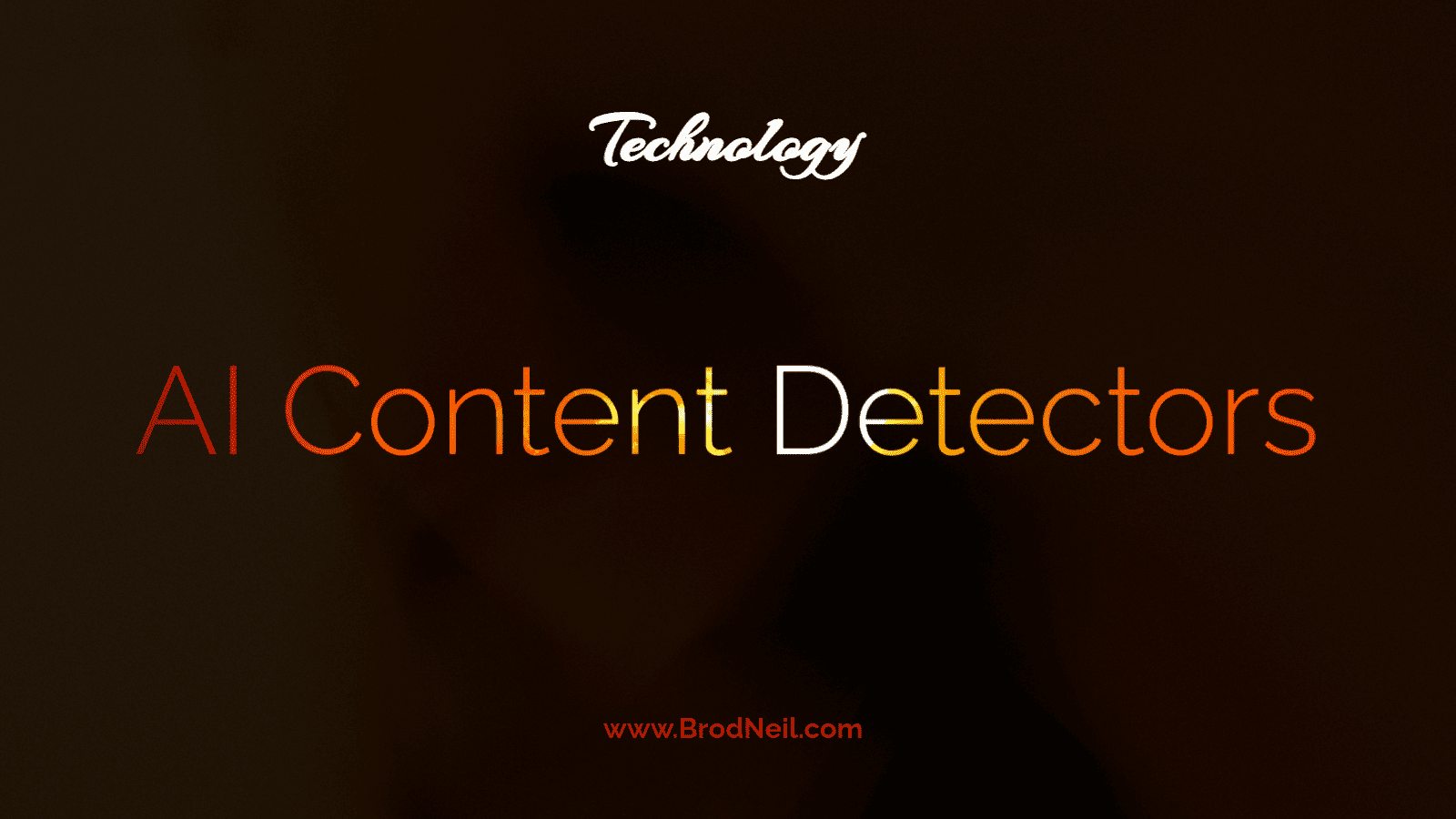In an era where online content is expanding exponentially, the need for effective content filtering has become more pressing than ever. Artificial Intelligence (AI) content detectors have emerged as the future of online content filtering, revolutionizing how we consume and interact with digital media.
With the ability to analyze vast amounts of data in real time, these advanced algorithms can swiftly identify and categorize content based on various parameters. From detecting spam and malicious content to identifying copyright infringement and hate speech, AI content detectors offer a powerful solution to maintaining a safe and engaging online environment. They enhance user experiences by filtering out unwanted and harmful content and provide content creators and platform administrators with valuable insights and analytics. Join us as we explore the exciting advancements in AI content detectors and the potential they hold in shaping the future of online content filtering.
AI content detectors to check out
AI content detection has seen rapid advancements recently, with several notable AI-powered solutions emerging. These content detectors utilize advanced machine learning techniques and natural language processing algorithms to filter and moderate online content effectively. Here are some of the best AI content detectors available:
Content at Scale
Content at Scale is an innovative AI-powered writing assistant tool that enhances content creation speed. In addition to its ability to generate text, Content at Scale provides a complimentary AI content detection tool.
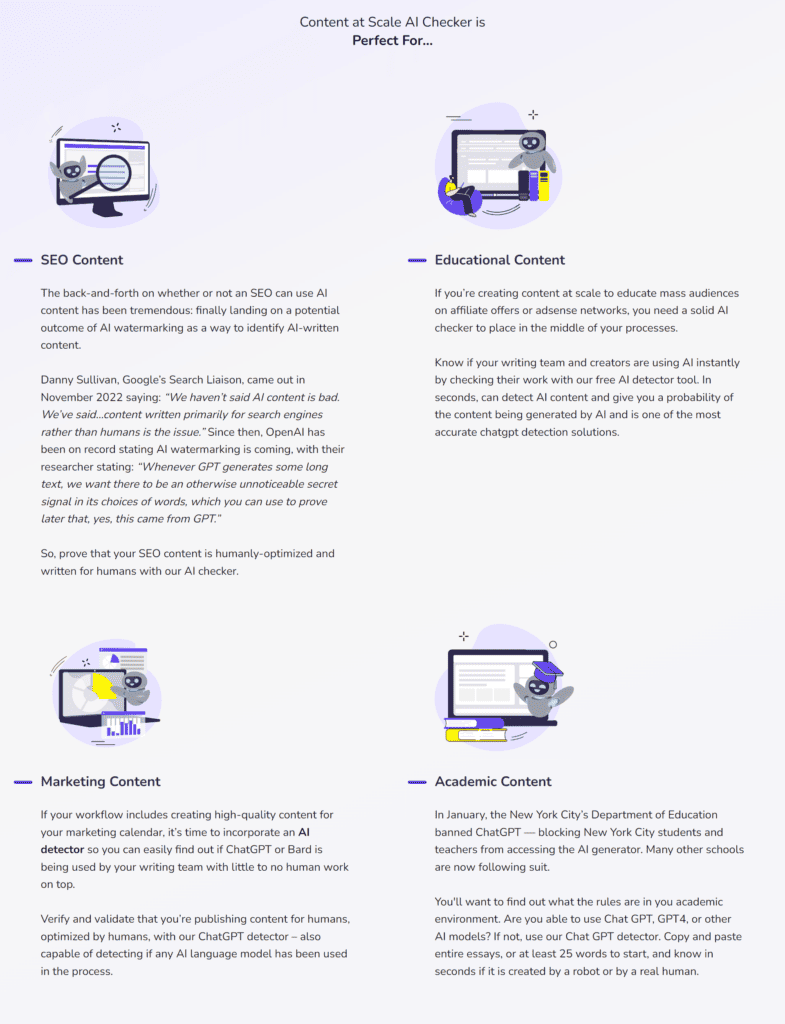
Originality.AI
Originality.ai is an AI-based writing software that serves the dual purpose of detecting AI-generated content and identifying instances of plagiarism.
While AI predominantly generates unique and original content, the risk of plagiarism still exists. Therefore, subjecting AI-written content to a plagiarism checker as a precautionary measure is prudent, ensuring adherence to ethical writing practices and avoiding potential infringement.
It operates on a credit-based system, with each credit costing $0.01 and allowing the scanning of 100 words.
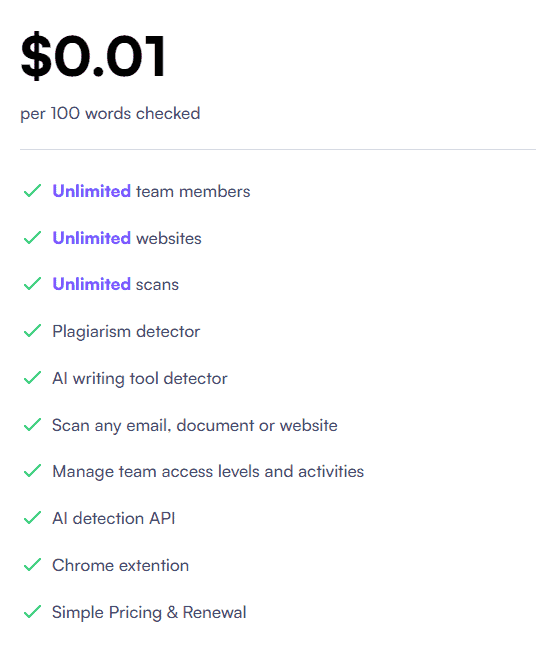
Writer
The AI content detector provided by writer.com assigns a human-written score ranging from 0 to 100%. Suppose the text receives a score of 100%. In that case, it indicates that a human entirely writes it and meets the desired criteria.
However, the text’s human-generated score falls below 80%. In that case, the tool suggests making edits to improve the score until it reaches 80% or higher.
The tool offers free usage for the first 1500 characters. Users must copy and paste their text into the writer.com text editor, click the “Analyze text” button, and the tool provides the human-written score within seconds.
For those seeking additional features and capabilities, writer.com offers a paid account option priced at $18 per month, which covers up to five users. This plan includes an AI content detection API with a monthly limit of 500,000 words. Along with the AI content detection functionality, the paid account provides access to other benefits and features offered by writer.com.

Copyleaks
Focused initially on plagiarism checks, Copyleaks has expanded its offerings to include AI content detection. With a claimed accuracy rate of 99.12%, Copyleaks excels at detecting AI-generated content, including ChatGPT material. It utilizes AI technology to identify the presence of artificial intelligence.
Copyleaks asserts that its technology will continuously adapt to keep up with the evolution and increasing sophistication of GPT models. This ensures that its detection capabilities remain effective even as AI systems advance.
In addition to its plagiarism check and AI detection tool, Copyleaks provides an AI grading tool suitable for standardized exams and open-ended questions. Furthermore, they offer a code plagiarism checker designed explicitly for Python, C++, and Java programming languages. These tools are powered by Copyleaks’ AI technology, demonstrating their commitment to leveraging AI for various content analysis purposes.
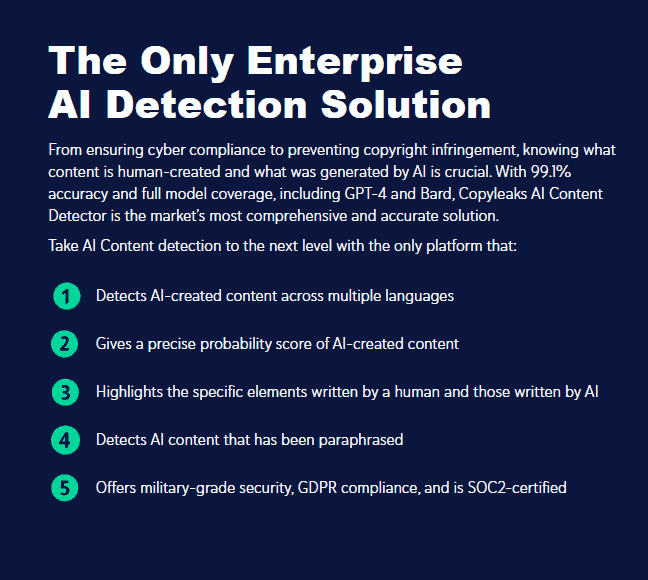
GPTZero
GPTZero is designed to determine if a prominent language model authored a document. It offers predictions at different levels, such as sentences, paragraphs, and documents. To train GPTZero, a diverse collection of human-written and AI-generated text, with a specific emphasis on English prose, was utilized.
GPTZero exhibits strong performance across various AI language models, encompassing ChatGPT, GPT-3, GPT-2, LLaMA, and similar AI services based on those models. Its versatility extends beyond these examples, ensuring reliable predictions across various AI language models.
Their free account includes a 5K character limit per document and three files limit per batch upload, while their paid version starts at $9.99 for educators while their pro account starts at $19.99.
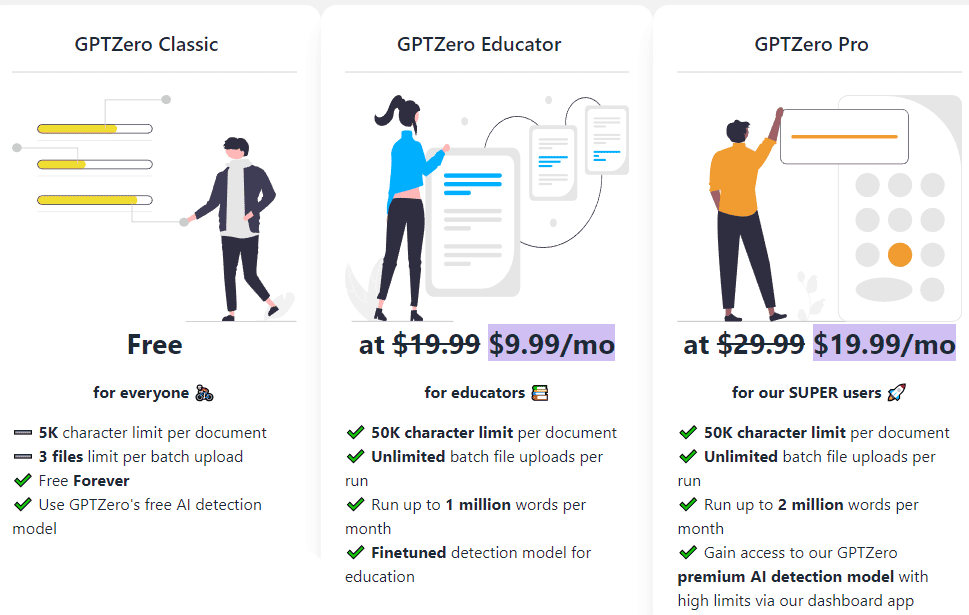
Sapling
Sapling is an AI assistant designed specifically for enhancing business communication. It aims to assist teams in achieving higher levels of efficiency and effectiveness when interacting with clients, catering to various scenarios and requirements.
Sapling has developed an AI detection tool that provides the likelihood of a particular content being generated by an AI model like GPT-3.5 or ChatGPT. This tool is available as a complimentary AI Writing Detector, but a pro account is needed for lengthier queries, starting at $25 per month.
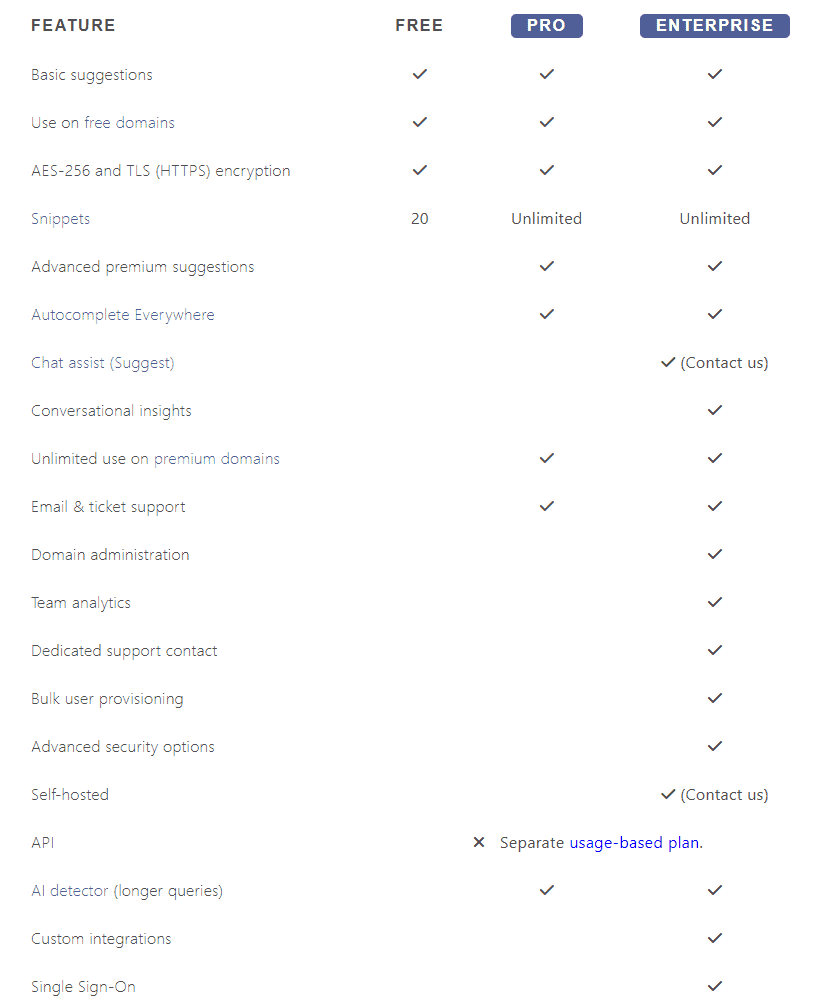
Comparison
To evaluate the effectiveness of their AI detection software, we conducted tests that involved comparing the outcomes of human-generated content with those produced by ChatGPT, an AI writing model.
Human-made content
VPN or Virtual Private Network is a service that sets up a private and protected network from public internet connections. This will provide you with greater anonymity, privacy, and security. VPN makes it hard for third-party trackers to know your identity, trace your online activities, or steal your data. Virtually, your online activities will be untraceable with a VPN.
AI-generated content
A Virtual Private Network (VPN) is a service that establishes a secure and secluded network using public internet connections. It offers enhanced levels of anonymity, privacy, and security. By utilizing a VPN, it becomes challenging for external entities to track your identity, monitor your online behavior, or compromise your data. Essentially, a VPN ensures that your online activities remain untraceable.
| AI Detector Tool | Human-made content | AI-generated content |
| Content at Scale | 36% Human | 51% AI |
| Originality.AI | 57% Human | 100% AI |
| Writer | 97% Human | 99% Human |
| Copyleaks | 75.8 AI | 78.4% AI |
| GPTZero | Moderate likelihood of being written by AI | Likely to be written by an AI |
| Sapling | 100% Human | 100% AI |
It is worth noting that each AI content detection tool operates on its unique set of criteria to determine if the content was generated by an AI or not. These criteria can vary significantly based on factors such as the underlying algorithms, training data, and specific features analyzed by the tool. As a result, different tools may exhibit variations in their ability to identify AI-generated content accurately.
Furthermore, the constant evolution and advancements in AI technology pose ongoing challenges for content detectors. As AI models continue to improve and generate more sophisticated content, detection tools must adapt and update their criteria to stay effective. This dynamic nature of AI development means that content detection tools must keep pace with emerging AI techniques and models to maintain their ability to identify AI-generated content accurately.
How do AI content detectors work?
AI content detectors utilize machine learning algorithms to analyze and understand digital media content. They are trained on vast datasets encompassing various types of content, enabling them to recognize patterns, context, and anomalies. These algorithms use natural language processing (NLP) techniques to understand the meaning and sentiment behind the text, image recognition algorithms to analyze visuals, and audio processing algorithms to identify audio content. By combining these different approaches, AI content detectors can effectively scan and evaluate online content in real-time.
One of the key components of AI content detectors is their ability to learn and adapt. As they analyze more data, they continuously refine their models, improving their accuracy and ability to detect different types of content. This adaptability is crucial in keeping up with the ever-evolving landscape of online content and staying ahead of emerging threats and trends. With the power of AI, content detectors can quickly adapt to new forms of malicious content, spamming techniques, and emerging trends in online behavior.
The underlying technology behind AI content detectors involves deep learning, a subset of machine learning that leverages neural networks with multiple layers to process and analyze complex data. These neural networks are trained using labeled data, where human experts manually classify content to create a training set. The AI content detector then learns from this training set and applies its knowledge to identify similar patterns in new, unlabeled content.
AI content detectors also rely on data sources such as user feedback, community guidelines, and industry standards to improve their accuracy. By incorporating human expertise and feedback, these algorithms can continually adapt to changing content standards and user preferences. This iterative process ensures that AI content detectors can effectively filter out unwanted content while minimizing false positives and negatives.
Benefits of AI content detectors
AI content detectors offer several significant benefits that can revolutionize the process of online content filtering. These benefits enhance efficiency, accuracy, and consistency while saving valuable time for human moderators. However, it is essential to acknowledge the limitations of AI content detectors. Here are some of the key advantages and considerations:
Enhanced efficiency and scalability
AI content detectors can analyze a large volume of articles in a relatively short amount of time. Automating the initial screening process significantly reduces the burden on human moderators, allowing them to focus on more complex tasks. This increased efficiency enables platforms to handle more articles effectively, ensuring timely content moderation.
Improved accuracy in identifying inappropriate content
AI content detectors employ advanced natural language processing techniques to identify and flag articles that contain inappropriate or prohibited content. With high accuracy, these detectors can analyze various aspects, such as explicit language, hate speech, spam, or copyright violations. By filtering out potentially harmful or violating articles, platforms can maintain a safer and more compliant online environment.
Time-saving for human moderators
By automating the initial content filtering process, AI detectors save significant time for human moderators. Instead of manually reviewing every article, moderators can focus on more nuanced or complex cases requiring human judgment. This streamlines the moderation workflow and enables moderators to promptly address more critical issues, leading to a more efficient content moderation process.
Consistent and objective content assessment
AI content detectors follow predefined rules and algorithms, ensuring a consistent and objective assessment of articles. Personal biases or emotions do not influence them, resulting in a more impartial and standardized content-filtering process. This consistency is crucial, especially when dealing with controversial or sensitive topics, as it helps maintain fairness and reduce potential accusations of bias.
AI content detectors provide significant benefits in terms of efficiency, accuracy, and consistency, thereby revolutionizing the process of online content filtering. These advantages contribute to a streamlined and effective content moderation workflow, allowing platforms to handle a larger volume of articles while ensuring a safer and more compliant online environment.
However, it is important to acknowledge the limitations and challenges associated with AI content detectors. Striking the right balance between automated detection and human oversight is essential to mitigate these challenges and ensure the reliability and fairness of the filtering process.
Applications of AI content detectors
AI content detectors for articles have a wide range of applications across various online platforms and industries. These detectors are crucial in ensuring content quality, safety, and compliance. Here are some key applications of AI content detectors:
Social media platforms and online communities
Social media platforms have become a prominent source of information and communication. AI content detectors help identify and filter out articles that violate community guidelines, contain hate speech, or spread misinformation. By implementing AI content detectors, social media platforms can create a safer and more inclusive online environment for users.
E-commerce and user-generated content
E-commerce platforms often rely on user-generated content, such as product reviews and descriptions. AI content detectors can assist in identifying fraudulent or misleading articles, ensuring that consumers receive accurate and trustworthy information. This helps maintain the integrity of online marketplaces and enhances the overall shopping experience for customers.
Online marketplaces and classified ads
Online marketplaces and classified ad platforms heavily rely on user-submitted articles. AI content detectors can efficiently scan and assess reports to identify potential scams, illegal content, or inappropriate listings. These platforms can foster trust, improve user safety, and maintain a positive user experience by implementing AI content detectors.
Educational platforms and e-learning
AI content detectors play a crucial role in maintaining the integrity and quality of educational content. They can identify and flag articles that contain plagiarism, inappropriate material, or violate academic standards. With AI content detectors, educational platforms and e-learning providers can ensure a reliable and credible learning environment for students and educators.
The applications of AI content detectors are not limited to these examples alone. Any online platform or industry that relies on articles and written content can benefit from implementing AI content detectors. By automating the initial screening process and providing consistent and accurate assessments, AI content detectors contribute to a safer, more reliable, and higher-quality online content experience for users across various sectors.
Future developments and advancements in AI content detectors
The field of AI content detectors is witnessing rapid evolution and advancements, propelled by breakthroughs in machine learning, natural language processing, and computer vision. These advancements enhance the capabilities of existing detectors and pave the way for exciting future developments. Here, we delve into some anticipated advancements in this dynamic field.
Enhanced contextual understanding
Future AI content detectors will likely exhibit improved contextual understanding, enabling them to comprehend better the nuances, intent, and subtleties of human-generated and AI-generated content. By leveraging advanced language models and deep learning techniques, detectors can better differentiate between natural language patterns and those produced by AI models, leading to more accurate and reliable identification.
Multi-modal content detection
With the increasing prevalence of multi-modal content, which combines text, images, audio, and video, future AI content detectors will likely extend their capabilities beyond text-based detection. Integrating computer vision and audio analysis techniques will enable detectors to examine visual and auditory elements in conjunction with textual information, providing a more comprehensive analysis and ensuring the detection of AI-generated content across diverse media formats.
Continuous learning and adaptation
Future content detectors are anticipated to employ continuous learning and adaptation mechanisms to keep up with the ever-evolving landscape of AI models and techniques. These mechanisms will enable detectors to learn from new AI models, adapt to emerging trends in AI-generated content, and dynamically update their criteria and algorithms to maintain high detection accuracy in real-time scenarios.
Transparency and explainability
The drive towards increased transparency and explainability in AI systems will also extend to content detectors. Future detectors are expected to provide more precise insights into their decision-making process, allowing users to understand how the detection results are derived. This transparency will foster trust, enable accountability, and facilitate identifying and rectifying potential biases or limitations in the detection process.
The future of AI content detectors holds great promise. Enhanced contextual understanding, multi-modal content detection, continuous learning and adaptation, and transparency are some areas where we can anticipate significant developments. By embracing these advancements, we can empower content detectors to accurately identify AI-generated content and facilitate responsible and trustworthy AI adoption in various domains.

